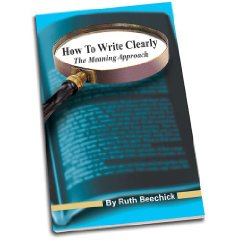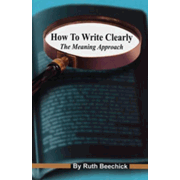"Not so fast!" Hmmm… is this a sentence or not? You hear it frequently used as a sentence in everyday conversation. You'll come across it in works of fiction and possibly even non-fiction. But it defies what we're taught in school regarding the essentials for construction of a sentence. Would you rather read, "Don't make your next move so quickly!"? I think something is lost as the grammar is "improved."
Rules of grammar that teachers and children labor to master for years are seemingly ignored by many of the best professional writers. So how do we know what to teach our children?
Ruth Beechick, a beacon of common sense in the world of home education, challenges the common wisdom of most textbooks on grammar and composition. Her primary point is that good writers are more concerned about readability than with following grammar rules. She makes similar claims about composition—that the best writers rarely follow the structural formats children are taught in schools. Nevertheless, Beechick acknowledges that there are some rules or conventions that writers should follow. In this 73-page book, she explains when writers should pay attention to which rules and when they should make their own decisions.
Parents/teachers should read this book before beginning to instruct their children in grammar and composition. Then they should reread it every few years as a self-check to ensure they are not sacrificing clarity and originality in their children's writing on the altar of grammatical correctness.
There is an index at the back of the book, so parents might refer teens to specific sections such as those on "commas" or "metaphors." But this remains primarily a resource for parents and teachers rather than for students.
How to Write Clearly itself serves as an excellent example of Beechick's contentions. She writes with both an engaging style and directness, using many positive literary examples along with many writing samples that "need repair" to illustrate her points. She does not attempt to cover every possible topic but selectively addresses key issues with which parents and teachers should be concerned as they determine how to teach grammar and composition.









